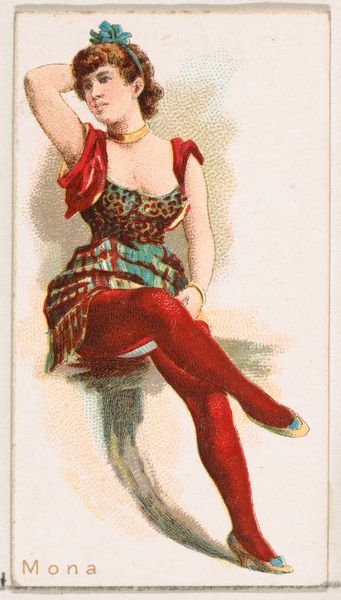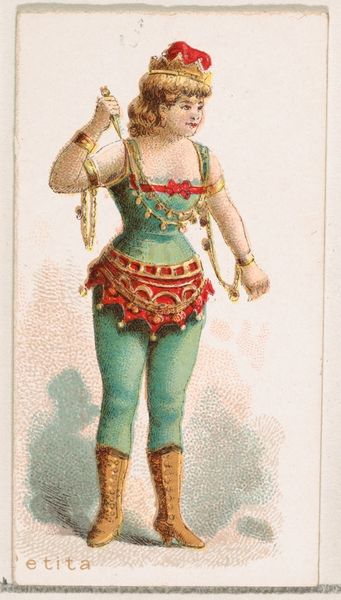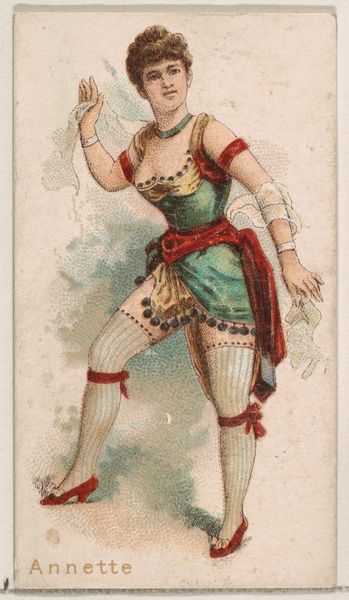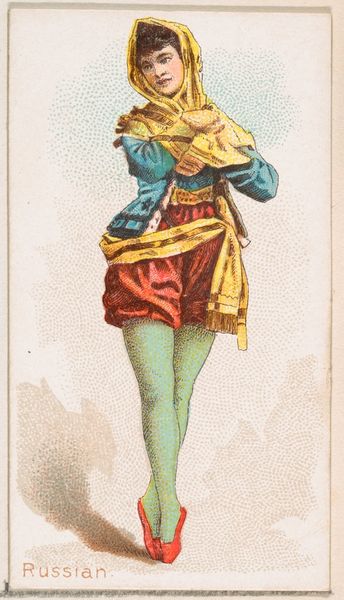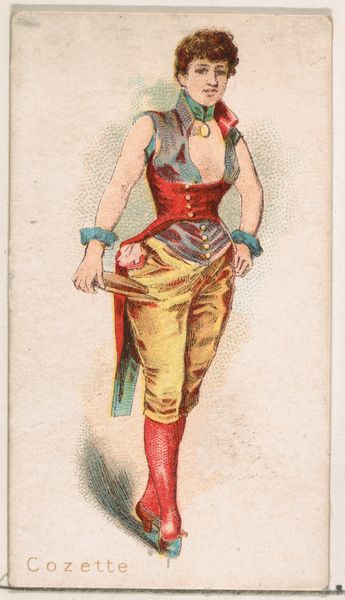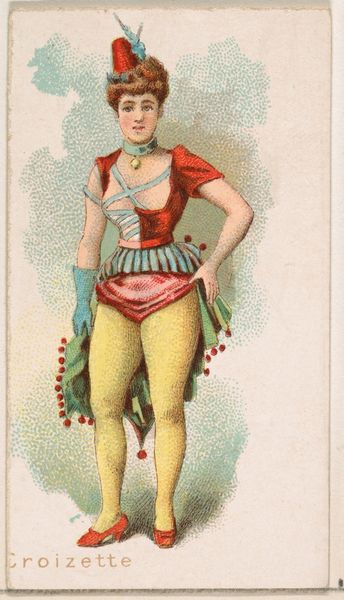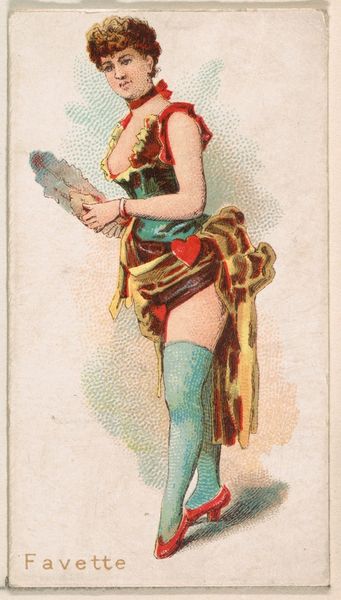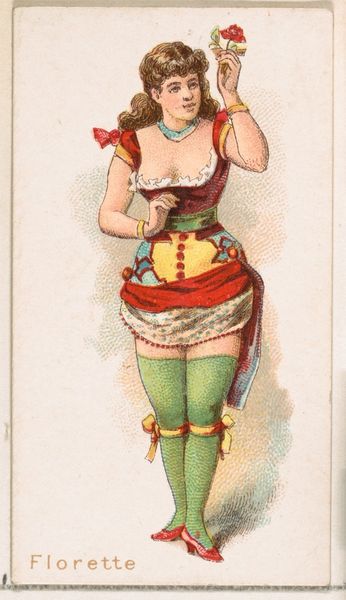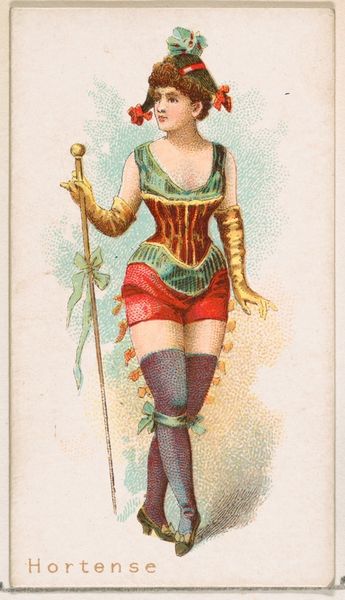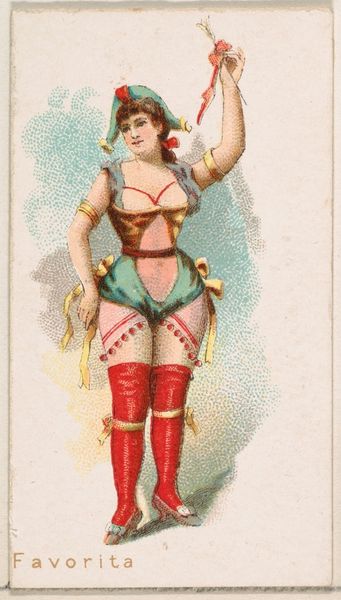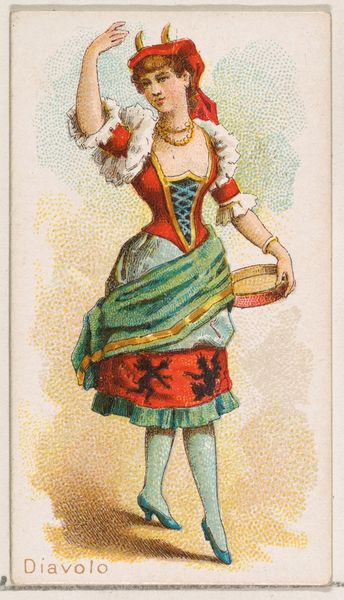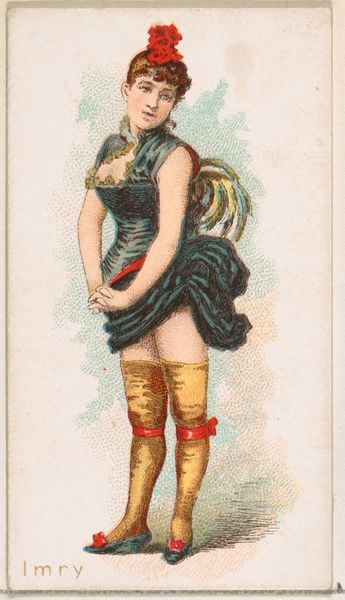
Octavia, from the Ballet Queens series (N182) issued by Wm. S. Kimball & Co. 1889
0:00
0:00
drawing, print
#
portrait
#
drawing
#
water colours
#
egg art
# print
#
handmade artwork painting
#
coloured pencil
#
coffee painting
#
men
#
watercolour bleed
#
watercolour illustration
#
cartoon carciture
#
watercolor
#
watercolur painting
Dimensions: Sheet: 2 3/4 × 1 1/2 in. (7 × 3.8 cm)
Copyright: Public Domain
Curator: This is "Octavia, from the Ballet Queens series," created around 1889 by Wm. S. Kimball & Co. It’s a print, a type of promotional card. Editor: My first impression is one of whimsical theatricality, from the bright colors to the curious little butterflies above the dancer. Curator: It’s fascinating to consider these cards were essentially advertisements. The Ballet Queens series points to the intersection of popular entertainment and burgeoning consumer culture. These cards, akin to modern-day trading cards, were included in cigarette packs. Editor: Yes, the visual language is captivating. Octavia’s gaze upwards towards the butterflies evokes a sense of lightness, perhaps even spiritual aspiration. Ballet itself was already laden with symbolic significance. Curator: Absolutely, and look at the materiality of it. We have paper, ink, and the whole lithographic process – think of the labor involved in mass-producing these cards for widespread distribution. They were meant to be ephemeral, yet they survive, giving us insight into production practices of the time. Editor: The color palette as well. Red tights, brown boots, green gloves: there's almost an alchemical feeling to it, drawing on color traditions but to represent something more fleeting, a moment of theatrical illusion. Notice the little touches that render a character of refinement through the symbolic dance posture, juxtaposed against the advertisement context. Curator: Consider also the impact on gender roles and representations of women during this era. Ballet dancers were celebrated but often existed in a liminal space, viewed with both admiration and suspicion. The cards likely contributed to both the glamorization and the objectification of female performers. Editor: A dance frozen in time, a symbol encased within a throwaway consumer product... fascinating to consider the layers of intent, use, and cultural significance. Curator: Indeed, it makes one reconsider our relationships to production, to consumer goods and to this little piece of preserved ballet history.
Comments
No comments
Be the first to comment and join the conversation on the ultimate creative platform.
